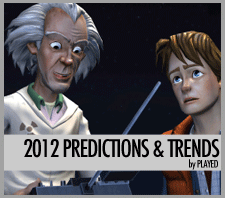Cold Hard Facts vs. Warm Fuzzy Feelings
Posted by Lynn Lim | April 24, 2012Today I had my annual physical. This is a bit of a misnomer because I can’t remember the last time I had one and actually had to ask my doctor if she had forgotten to give me the exam. I thought it would be more…invasive. She said no – since I am healthy and young (to which I snorted), she didn’t need to poke and prod too much.
Anyway, during my visit, I got shot! No really, it was a Measles Mump Rubella booster, which I was told included the extra benefit of protection against pertussis – whooping cough. Yes, it’s back??? Despite Dr. Andrew Wakefield’s Vaccination and Autism study from 1998 being proven as false, people like Donald Trump still believe there is a link between the two. Why? Because the story tugs at our heartstrings – what parent would want to knowingly expose his or her children to risk?
So emotions sometimes win over hard facts, especially in cases like this where anecdotes are stickier than statistics. Look at your child and then look at the number zero. Which one would you remember? Feelings are appealing and stories are the perfect way to package them. That’s why companies are all about creating narratives right now, and obviously why this whole paragraph has been one big DUH.
But then I read something in the New York Times that left me confused, because even though I don’t agree with this particular outcome, I generally like when feelings win over data.
While we often hear about school art and music programs being threatened by budget cuts (precisely because their value is difficult to measure), this problem is spreading into the core curriculum. A Manhattan middle school English teacher has been giving students reading enrichment lessons that also provide “cultural capital” through a reading list of classic literature. The idea was hatched after he learned a former star student had transferred out of a selective high school (full of Manhattan’s elite) to a less competitive one because she felt uncomfortable in that setting. He wanted to prepare his less-advantaged pupils for interacting with future literary-minded peers, born to parents with Ph.D.’s, not G.E.D.’s, by leveling the field a bit.
The students identified with Of Mice and Men’s themes, drew their own parallels between Macbeth and Scarface, and broadened their historical perspectives through The Grapes of Wrath. Enthusiasm for these groups is palpable, yet student performance on standardized tests has not improved proportionately. There’s pressure to raise scores on exams that focus on complex sentence structure and not literary (read: human) themes. This means teachers must train students to read texts devoid of the emotional punch that attracts them to reading in the first place. Ironically, there is a positive correlation between length of time spent reading and higher test scores. Regardless, the warm and fuzzy is losing the battle to numbers, and now the program is only available to the school’s best eighth graders.
So even though emotions trump facts, they apparently can’t compete with data either? I guess it just depends on what’s more convenient at the time. But truthfully, I never quite realized the conundrum these two realizations present together, nor how deeply and outwardly they are seeping. I mean, if you can’t change people’s minds with facts alone and you can’t always convince them through their hearts, how do you get through to anyone? Is there a statistically perfect blend of the two?
If anyone figures this out, let me know. Please.
Banner image credit: hagerstenguy
Leave a Comment
RSS feed for comments on this post · TrackBack URI



